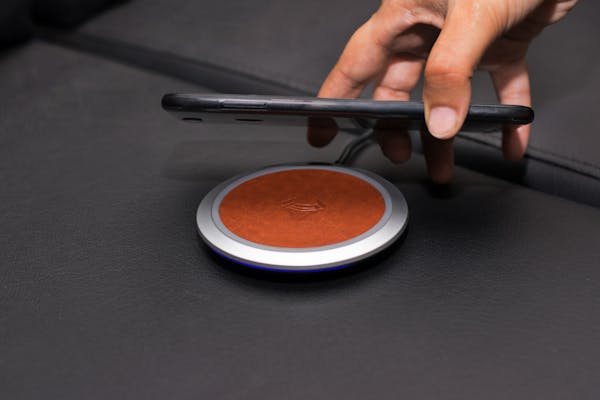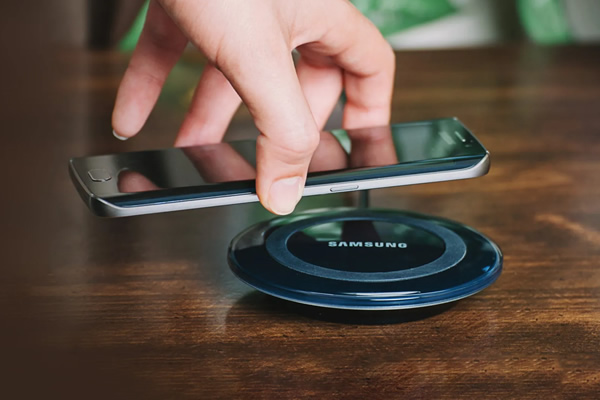Introduction
The evolution of charging technology
Charging technology has evolved significantly since the dawn of portable electronics. From the early days of bulky power bricks to the ubiquitous USB cables, the desire for faster, more convenient charging solutions has been a constant driving force.
The rise of wireless charging
The Basics of Wireless Charging

What is wireless charging?
Wireless charging, in essence, is the transfer of power from a source to a device without the need for physical connectors. It relies on the principle of electromagnetic induction, resonant inductive coupling, or radio frequency waves to transmit energy seamlessly.
Inductive vs. resonance wireless charging
Wireless charging can be categorized into two primary types: inductive and resonance. Inductive charging, more common and efficient, uses electromagnetic fields to transfer power to the device. Resonance charging, on the other hand, leverages resonant inductive coupling to extend the range and flexibility of the charging process.
Qi standard: the universal language of wireless charging
The Qi (pronounced “chee”) standard, developed by the Wireless Power Consortium, serves as the universal language of wireless charging. Devices and chargers bearing the Qi logo can seamlessly communicate, ensuring compatibility and smooth operation across brands and models.
Wireless Charging Technologies
Magnetic induction
Magnetic induction is the foundational technology behind wireless charging. It relies on coils in both the charging pad and the device, creating a magnetic field that transfers energy. While efficient, it’s limited by the necessity of close alignment between the coils.
Pros:
- Efficient and widely adopted.
- Offers a secure and reliable charge.
Cons:
- Requires precise alignment.
- Limited charging range.
Magnetic resonance
Magnetic resonance takes wireless charging a step further by enabling more flexible positioning between the charger and the device. It employs resonant coils, allowing for a broader charging area.
Pros:
- Improved flexibility in device placement.
- Greater charging distance.
Cons:
- Slightly less efficient than induction.
- May generate more heat during charging.
Radio frequency (RF) wireless charging
Radio frequency wireless charging is an emerging technology that uses radio waves to transmit energy. It has the potential for longer-range charging, making it ideal for scenarios where traditional charging methods are inconvenient.
Pros:
- Extended charging range.
- Potential for charging multiple devices simultaneously.
Cons:
- Currently in the experimental stage.
- Efficiency and safety concerns must be addressed.
Solar wireless charging
Harnessing the power of the sun, solar wireless charging has gained attention for its potential to charge devices through photovoltaic panels. It’s especially relevant in the context of sustainable energy.
Pros:
- Environmentally friendly.
- Ideal for outdoor and emergency charging.
Cons:
- Relies on sunlight availability.
- Slower charging compared to traditional methods.
The Benefits of Wireless Chargers

Convenience and accessibility
Enhanced durability
Aesthetics and design
Wireless Charging Ecosystem
The role of wireless charging pads
Wireless charging pads come in various forms, including single-device pads, multi-device pads, and even car-integrated solutions. These pads are essential to the wireless charging ecosystem, serving as the primary interface between the power source and your gadgets.
Types of charging pads:
- Single-device pads for compact charging.
- Multi-device pads for convenience.
- Car-integrated pads for on-the-go charging.
Compatibility with devices:
- Ensure your device is compatible with the charger’s technology.
Wireless charging in public spaces
The proliferation of wireless charging technology extends beyond our homes. Airports, coffee shops, and hotels are increasingly offering wireless charging stations to cater to the needs of travelers and patrons. These public charging stations offer convenience but come with their own set of advantages and drawbacks.
Pros of public charging stations:
- Convenience during travel.
- Reduced dependency on personal chargers.
Cons of public charging stations:
- Security and privacy concerns.
- Varying charging speeds and compatibility.
The future of wireless charging infrastructure
The vision of a wireless world doesn’t end with our gadgets. Electric vehicles (EVs) are gradually adopting wireless charging technology, allowing for effortless, cable-free charging. This innovation aligns with the broader concept of smart cities, where wireless charging infrastructure becomes integral to urban planning and sustainability.
Wireless charging for electric vehicles:
- Making EV charging more convenient and accessible.
- Challenges in implementing wireless EV charging.
Integration into smart cities:
- How wireless charging fits into the future of urban planning.
- Implications for sustainability and energy efficiency.
Compatibility and Challenges
Device compatibility
The landscape of wireless charging is currently split between Android and iOS ecosystems. While Android devices widely embrace various wireless charging standards, Apple primarily supports the Qi standard, which is gaining momentum in the industry.
To overcome this divide, many third-party manufacturers are developing universal wireless chargers that work seamlessly with both Android and iOS devices. The goal is to establish a cohesive wireless charging experience for all consumers.
Overcoming efficiency and speed limitations
Wireless charging has made significant strides in terms of charging speed, with fast wireless charging solutions now available. These advancements aim to match or even surpass the speed of traditional wired charging.
Additionally, ongoing research and development are focused on improving the efficiency of wireless charging. Enhanced technology and power transmission methods promise even quicker and more reliable charging in the near future.
Safety concerns
As with any technological advance, safety remains a top priority. Overheating is a common concern, as wireless charging can generate heat during the transfer of energy. To mitigate this risk, chargers and devices are equipped with temperature monitoring and regulation mechanisms.
Addressing radiation and health concerns is also essential. Studies are ongoing to ensure that wireless charging remains safe for users and the environment, assuaging any potential apprehension about long-term exposure to electromagnetic fields.
Wireless Charging in Gadgets
Wireless charging in smartphones
Smartphones have been at the forefront of adopting wireless charging technology. From early experimentation to widespread adoption, the smartphone market has witnessed a substantial transformation.
The evolution of wireless charging in smartphones:
- The transition from wired to wireless charging.
- The development of proprietary technologies by leading manufacturers.
Key players in the smartphone market:
- Apple, Samsung, and other prominent smartphone manufacturers.
- The impact of wireless charging on consumer choices.
Laptops and tablets
While smartphones have embraced wireless charging, the adoption of this technology in larger devices like laptops and tablets remains a work in progress. The unique challenges posed by these devices, such as higher power requirements and size constraints, necessitate innovative solutions for wireless charging integration.
The potential of wireless charging for larger devices:
- The convenience of wireless charging for laptops and tablets.
- Overcoming technical challenges for broader adoption.
Wearables and IoT devices
Wireless charging has found a natural home in wearables and Internet of Things (IoT) devices. The compact nature of these gadgets, combined with their diverse power requirements, makes wireless charging a versatile and practical solution.
Smartwatches, earbuds, and more:
- The seamless integration of wireless charging in wearables.
- The role of wireless charging in the IoT ecosystem.
Future Innovations and Trends
Over-the-air charging
The dream of over-the-air charging, where devices charge without any physical connection, is edging closer to reality. While it’s still in the experimental stage, this groundbreaking technology promises to revolutionize the way we power our gadgets.
A glimpse into the future:
- How over-the-air charging technology works.
- The potential applications and challenges.
Eco-friendly charging solutions
As sustainability becomes a global imperative, wireless charging is following suit. Eco-friendly charging solutions, such as solar wireless charging and energy-efficient technology, are emerging to reduce electronic waste and minimize the environmental footprint.
Sustainable wireless charging:
- Leveraging renewable energy for device charging.
- Reducing e-waste and carbon emissions.
Integration with 5G and IoT
Wireless charging is set to become a linchpin in the convergence of 5G and the Internet of Things. The synergy of these wireless technologies will reshape how we connect, communicate, and power our devices in the smart, connected world of the future.
The synergy of wireless technologies:
- How 5G and IoT technologies complement wireless charging.
- Enhancing connectivity, speed, and efficiency.
Consumer Adoption and Market Trends
Growth of the wireless charging market
The wireless charging market is experiencing exponential growth, with forecasts suggesting a continued upward trajectory. As more users recognize the benefits of wireless charging, the market size is expanding rapidly.
Market size and projections:
- Quantifying the wireless charging market.
- Predictions for future growth and market leaders.
Key players and competition:
- Leading companies shaping the wireless charging landscape.
- The competitive landscape in the wireless charging industry.
Consumer behavior and preferences
Understanding consumer behavior and preferences is vital to shaping the wireless charging landscape. Surveys and studies shed light on what users value in wireless charging technology and how manufacturers can cater to these preferences.
Surveys and studies:
- Insights into what consumers want from wireless charging.
- Shaping product development and innovation.




